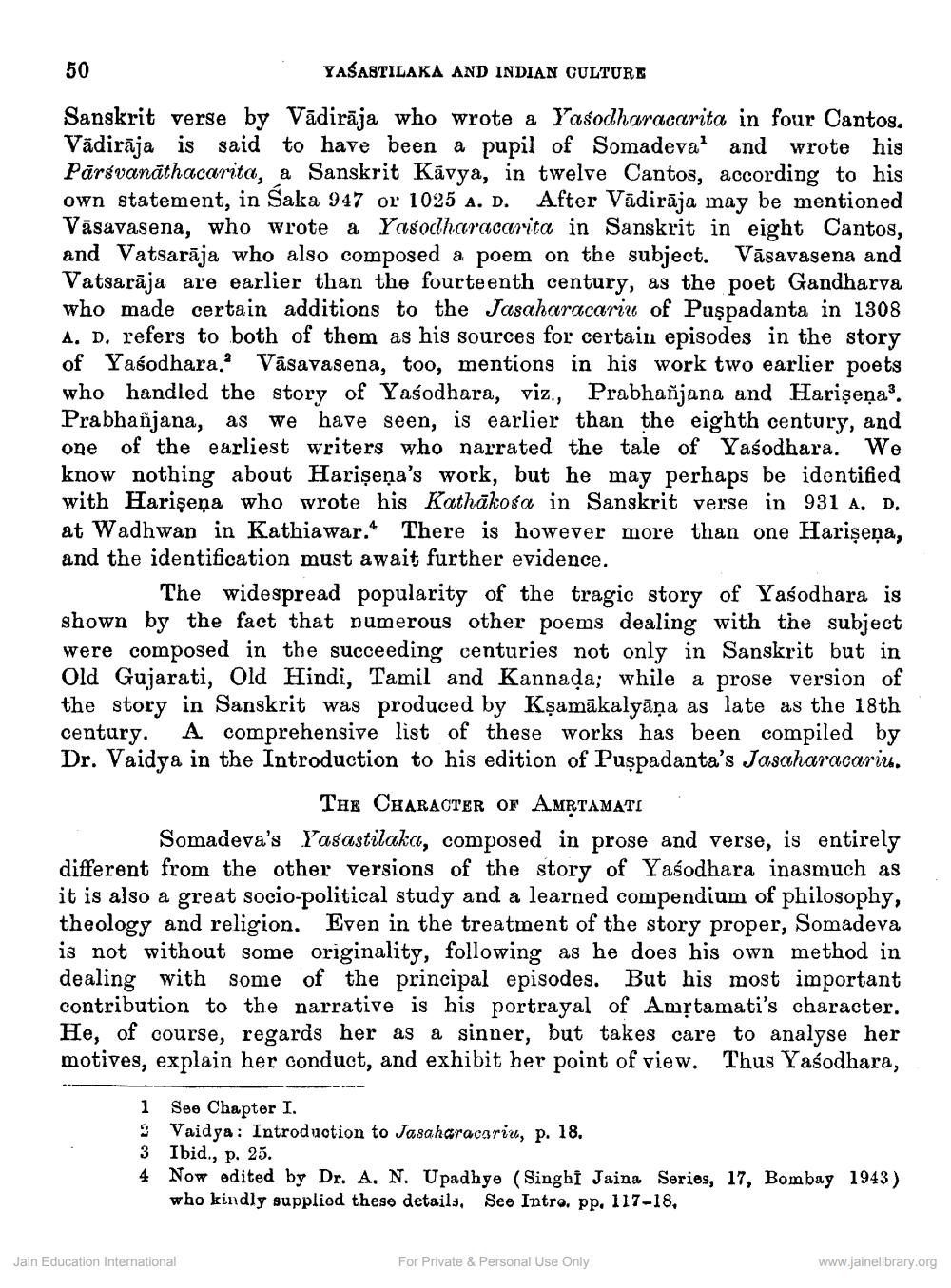________________
50
YAŠASTILAKA AND INDIAN CULTURE
Sanskrit verse by Vădirāja who wrote a Yasodharacarita in four Cantos. Vădirāja is said to have been a pupil of Somadeval and wrote his Pārsvanāthacarita, a Sanskrit Kavya, in twelve Cantos, according to his own statement, in Saka 947 or 1025 A. D. After Vädirāja may be mentioned Vāsavasena, who wrote a Yasodharacarita in Sanskrit in eight Cantos, and Vatsarāja who also composed a poem on the subject. Vāsavasena and Vatsarāja are earlier than the fourteenth century, as the poet Gandharva who made certain additions to the Jasaharacariu of Puşpadanta in 1308 A. D. refers to both of them as his sources for certain episodes in the story of Yasodhara. Vasavasena, too, mentions in his work two earlier poets who handled the story of Yasodhara, viz., Prabhañjana and Harişeņa. Prabhañjana, as we have seen, is earlier than the eighth century, and one of the earliest writers who narrated the tale of Yasodhara. We know nothing about Harişeņa's work, but he may perhaps be identified with Harişena who wrote his Kathākosa in Sanskrit verse in 931 A. D. at Wadhwan in Kathiawar. There is however more than one Harişeņa, and the identification must await further evidence.
The widespread popularity of the tragic story of Yasodhara is shown by the fact that numerous other poems dealing with the subject were composed in the succeeding centuries not only in Sanskrit but in Old Gujarati, Old Hindi, Tamil and Kannada; while a prose version of the story in Sanskrit was produced by Ksamākalyāna as late as the 18th century. A comprehensive list of these works has been compiled by Dr. Vaidya in the Introduction to his edition of Puspadanta's Jasaharacariu.
The CharacteR OF AMŔTAMATI Somadeva's Yasastilaka, composed in prose and verse, is entirely different from the other versions of the story of Yasodhara inasmuch as it is also a great socio-political study and a learned compendium of philosophy, theology and religion. Even in the treatment of the story proper, Somadeva is not without some originality, following as he does his own method in dealing with some of the principal episodes. But his most important contribution to the narrative is his portrayal of Amộtamati's character. He, of course, regards her as a sinner, but takes care to analyse her motives, explain her conduct, and exhibit her point of view. Thus Yasodhara,
1 See Chapter I. 9 Vaidya : Introduction to Jasaharacariu, p. 18. 3 Ibid., p. 25. 4 Now odited by Dr. A. N. Upadhye (Singhi Jaina Series, 17, Bombay 1943)
who kindly supplied these details, See Intre, pp. 117-18.
Jain Education International
For Private & Personal Use Only
www.jainelibrary.org




